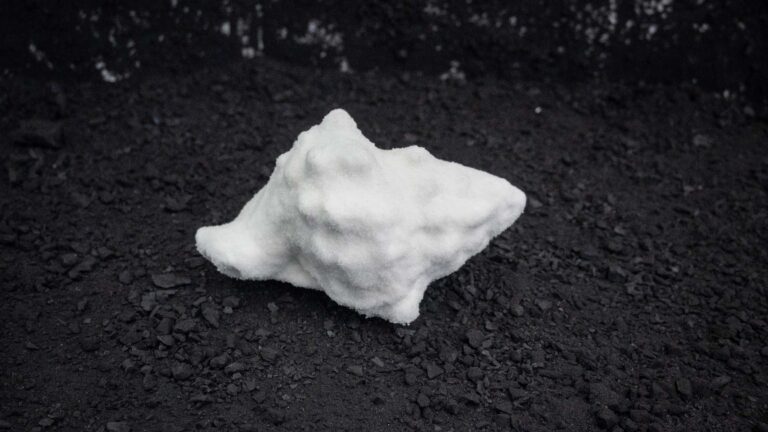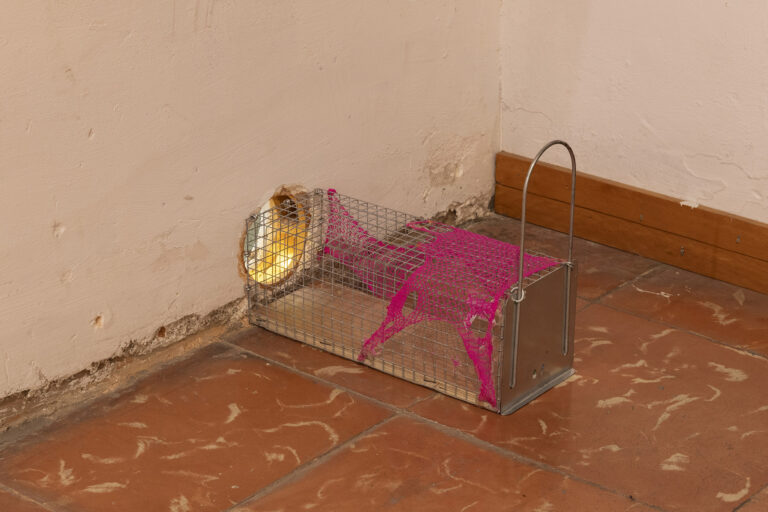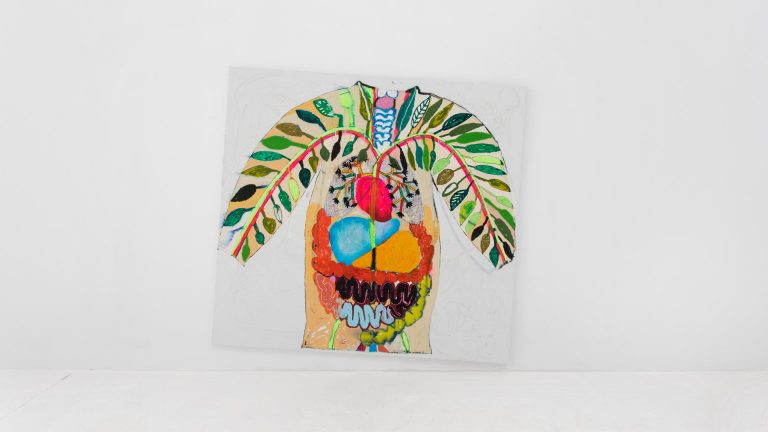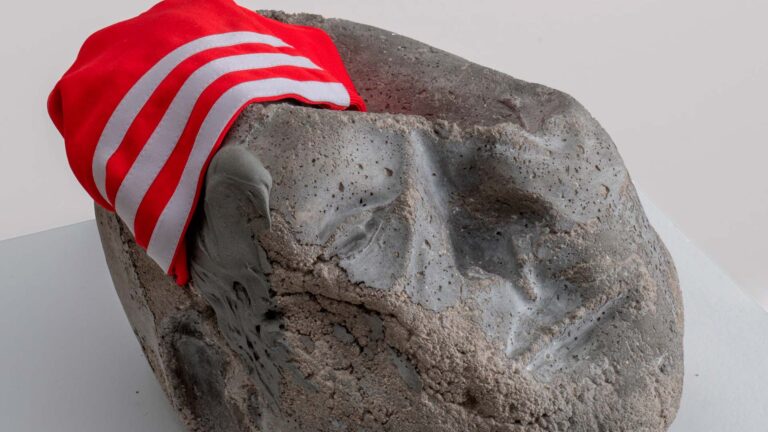Cibrián is thrilled to present eventually, Eden, a solo exhibition by Mónica Mays at the gallery.
The highest sphere of heaven, the empyrean, shares its etymology (Greek empyros –“fiery”) with empyreumatic, a term used to describe the smell of burning organic matter. There is a history of combustion and consumption behind that of Paradise. One that bridges its scriptural definition to its profane variant: Paradise on earth. Following the etymological rabbit hole, we look at Eden, from hebrew meaning “delights”, which in turn would come from akkadian edinu and sumerian e-din, both meaning ,ןֶדֵע “plain”, or “steppe”. When it comes to heaven, pleasure and topography seem to inevitably intertwine.
Paradise bears many names: Eden, Jannah, Zion, Shangri-La… Whether celestial or terrestrial, all these primeval places are conceived as landscapes that produce delights, traditionally taking the form of domesticated gardens that reflect a profound desire of consumerist harmony with a docile form of nature. Conversely to biblical heaven, earthly paradises thrive on fast touristic fluxes, which in turn feeds off extractive economies. -tract is the suffix Mays uses to talk about this, completed with a prefix accorded to the angle of the conversation: dis-, ex-, abs-. -tract comes from latin trahere, to drag or draw. The word suggests a kinetic coercion that echoes the exploitative dynamic lying at the bottom of our desire for earthly heavens. This tension between appetite-driven violence and the paradisiac fragility that prompts it, along with the resilience it produces, is at the center of Mays’ work.
For eventually, Eden, Mónica Mays presents new series of sculptures, stoneware drawings, and waxed canvases that embrace the idea of paradise as a polymorphous, irresolute and ambivalent place, both sacred and secular, that she explores without resentment or disillusion.
In her new sculptures, automobile exhaust systems serve as spurs for anatomical extensions. An exhaust system is meant to guide the residue of oil combustion away from an engine. The Spanish term for exhaust system is tubo de escape. Somewhere along the translation line, exhaustion and evasion connect. Escape from the pathology of extreme exhaustion that modern psychiatry coined as burn-out is the primary argument of the paradise promise of fast tourism. The same mechanism can be found in attraction parks, where desire and fear converge as a method of distraction, here depicted in the sketchy rollercoasters covering beige stonewares. There seems to be a causal chain from combustion and exhaustion to desire and evasion, one that pertains to both the basics of mechanics and the allure of paradisiac bliss, may it be via a transcontinental flight, an amusement ride or in the everafter that supposedly awaits beyond death.
The prodding limbs of the sculptures are completed by mechanical suspensions, springing devices designed to absorb chocks. Suspension (from pain, distress, the work of time and other mortal worries) is a prerequisite to grace, in turn a primordial condition to access paradise, both in the elysian and the tellurian realms. Exhaustion is considered in some religions as another path to grace (the exhaustion of the cycle of reincarnation in Buddhism, or that prompted by the ascetic surrendering advocated by Simone Veil’s catholic rhetoric.)
Mays’ repurposed systems are partially embalmed in funerary fabric, covered in plaster, wax, tree resins, myrrh, damar, offcuts of dried animal skins. All materials charged with both a preservative and a ritualistic quality. Somewhere along her process, Mays argues for repurposing and embalming, and by extension sculpture, as suspensive practices. Her work for eventually, Eden precisely suggests that exhausted suspension, additionally expressed by the comma separating heaven’s genesic name from its concluding adverb in the show’s title. Whether in life or after, paradise usually rewards an extensive wait.
Taxonomical drawers are used as pedestals for the sculptures. These cabinets of curiosities are pieces of furniture accommodating a multitude of compartments. Their alcoves echo a world where curiosity embraced science and the bizarre. An architectural organization of knowledge bearing resemblance to the narrow cabins of spanish carabelas from the modern exploration period, or that of luxury cruise ships. In both cases, the vessel inevitably docks the shores of remote places to commodify, compartmentalize, and exoticize. Is paradicize a word? The exotic objects to be displayed in these taxonomic drawers would be extracted from their geographic contexts for the sake of an epistemological approach. Here, the empty compartmentalized spaces, like a multitude of enclosed gardens, are left in plain view, permeating the rest of Mays’ work with an aura of deserted categorization.
The overall show displays a harmonic body of work whose shapes echo the lubricated machinery and texture of a dissonant paradise. Wet, corporeal, and exhausted by their functions, they veer between rise and fall, terror and desire, gravity and grace, as hopes and fluids alike leak from their handworked seams.






















































































